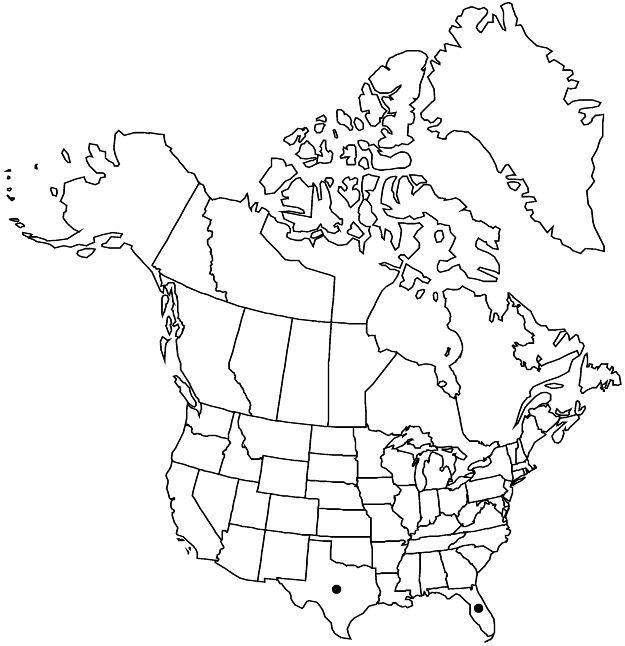Passiflora ciliata
Hort. Kew. 3: 310. 1789.
Stems terete to longitudinally ridged, glabrous or densely hairy. Leaves not or weakly pungent, glabrous or densely hairy, glandular-ciliate; stipules pectinate, 5–6 × 2–4 mm, with glandular bristles or hairs; petiole with glandular bristles or hairs; blade roughly symmetric, 3–10 (–12) × 3–8 (–10) cm, moderately 3 (–5) -lobed, middle lobe much longer than lateral lobes, margins weakly serrulate to nearly entire; abaxial fine veins weakly raised, abaxial nectaries absent. Floral bracts pinnatifid, 20–30 × 15–25 mm, margins serrate to nearly entire, with glandular bristles or hairs. Flowers: floral-tube cuplike, 4–6 mm deep; sepals white, 18–25 × 7–9 mm; petals purple to white, 20–25 × 8–10 mm; corona filament whorls 5–6, outer 2 whorls purple basally, white medially, pale-purple apically, linear, terete to transversely compressed, 16–20 mm. Berries bright red to crimson, ovoid to broadly ellipsoid, 30–35 × 20–25 mm.
Phenology: Flowering Aug–Dec.
Habitat: Warm-temperate to subtropical woodlands, shrublands, or disturbed areas, in moist to dry, loamy to sandy soil, 10–200 m
Distribution

Introduced; Fla., Tex., Mexico, West Indies, Central America
Discussion
Passiflora ciliata is relatively uncommon and apparently introduced in the flora area and probably is spreading. Nearly all plants in Florida (for example, R. P. Wunderlin and B. F. Hansen 2003) and some in Texas identified as P. foetida are actually P. ciliata. E. P. Killip (1938) noted the presence of P. foetida var. riparia (C. Wright ex Grisebach) Killip in Florida, which we include in P. ciliata.
Plants of this species within the flora area can be either entirely glabrous or densely hairy throughout; otherwise, they are essentially identical morphologically. The description provided here best reflects its variation within our region, and the species is more variable outside of our range. We treat this species broadly to include many members of sect. Dysosmia that have mature leaves unscented to weakly pungent when bruised and that have bright red to scarlet fruits, characteristics that seem to be consistently associated.
Selected References
None.
Lower Taxa
"fine" is not a number.